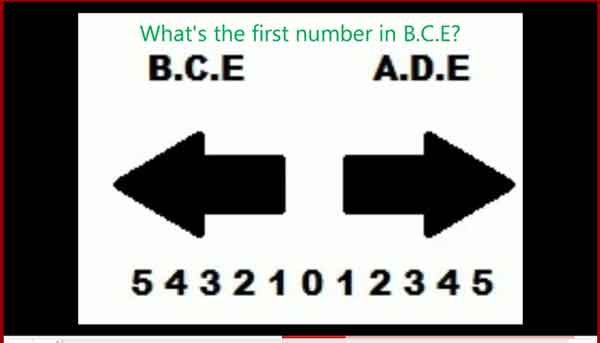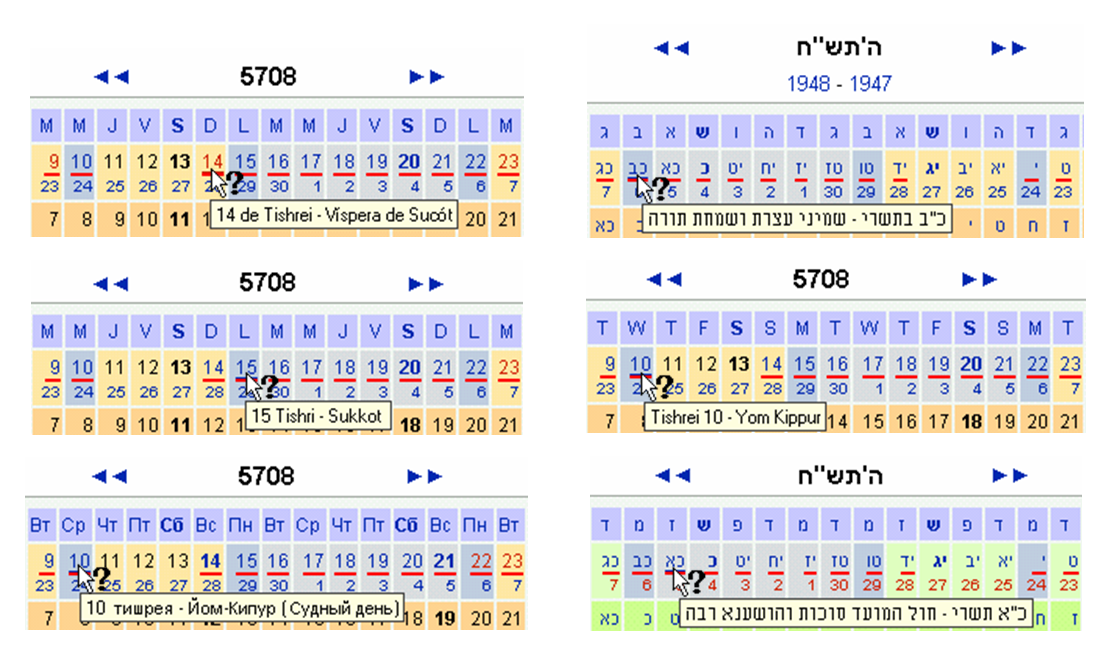An atheist sued the state because the cornerstones of all governmental buildings were marked with the A.D. and the year of the construction.
A.D. usually understood as the abbreviation for Anno Domini.
Of course the politicians from back in the day were part of a world-wide conspiracy to inflict their religious beliefs on the poor downtrodden folks that God has endowed with breath, life and the ability to not believe in Him. So this “idjit” took his issue to court.
His goal was to change the markers to say CE. This stands for Common Era and is used on Hebrew buildings, Synagogues and publications. They also use B.C.E. instead of B.C. as a designation. It stands for Before the Common Era.
In these days of trying to make everyone happy and take into consideration their tender feelings it would seem that perhaps this godless joker might have a point. That would hold water unless you did your homework, which I have done and will share the answers with you. There may be a test on this at a later date, so pay attention.
Different cultures in different parts of the world devised ways to mark the passing of time and we know these as calendars. You may be familiar with them as the things your insurance guys sends you at Christmas or Holiday Season, depending on your preference. Calendars have provided the basis for planning agricultural, hunting, and migration cycles, for divination and prognostication, and for maintaining cycles of religious and civil events.
They are based on different criteria that were important to a culture. It could be based on astronomical observations, lunar cycles, solar cycles, significant historical event beginnings and or religion. The principal astronomical cycles are the day (based on the rotation of the Earth on its axis), the year (based on the revolution of the Earth around the Sun), and the month (based on the revolution of the Moon around the Earth).
The calendar that most of us follow is the Gregorian calendar. Although the legal code of the United States does not specify an official national calendar. Use of the Gregorian calendar in the United States stems from an Act of Parliament of the United Kingdom in 1751, which specified use of the Gregorian calendar in England and its colonies. No one has ever questioned its use until 2006. The Gregorian calendar was created to serve the needs of the Roman Catholic Church for the ecclesiastical days and feasts.
 |
| Pope Gregory I |
Since the atheists have never seemed to be able to hold a group meeting and string together a list of timely events into a calendar, well based on the fact that we got tired of waiting for them to do this and went ahead and used the Gregorian calendar. It was already there. What can we say?
The Gregorian calendar is also based on an epoch or a significant historical event that would mark a beginning of a period of time. In this case the birth of Jesus Christ.
This epoch was established by the sixth-century scholar Dionysius Exiguus, who was compiling a table of dates of Easter. An existing table covered the nineteen-year period denoted 228-247, where years were counted from the beginning of the reign of the Roman emperor Diocletian.
Dionysius continued the table for a nineteen-year period, which he designated Anni Domini Nostri Jesu Christi 532-550. Thus, Dionysius' Anno Domini 532 is equivalent to Anno Diocletian 248. In this way a correspondence was established between the new Christian Era and an existing system associated with historical records. What Dionysius did not do is establish an accurate date for the birth of Christ. Although scholars generally believe that Christ was born some years before A.D. 1, the historical evidence is too sketchy to allow a definitive dating.
Given an initial epoch, one must consider how to record preceding dates. Bede, the eighth-century English historian, began the practice of counting years backward from A.D. 1. In this system, the year A.D. 1 is preceded by the year 1 B.C., without an intervening year 0. Because of the numerical discontinuity, this "historical" system is cumbersome for comparing ancient and modern dates. Today, astronomers use +1 to designate A.D. 1. Then +1 is naturally preceded by year 0, which is preceded by year -1. Since the use of negative numbers developed slowly in Europe, this "astronomical" system of dating was delayed until the eighteenth century, when it was introduced by the astronomer Jacques Cassini. Hence we have BC.
The Hebrew calendar is a lunisolar calendar. It’s currently 5766 according to the Hebrew calendar. It is based mainly on the cycles of the moon. It start was attributed to the Era of Creation or Era Mundi which corresponds to -3760 October 7th on the Julian calendar.
The codified Hebrew calendar as we know it today is generally considered to date from A.M. (Anno Mundi) 4119 (+359), though the exact date is uncertain. At that time the patriarch Hillel II, breaking with tradition, disseminated rules for calculating the calendar. Prior to that time the calendar was regarded as a secret science of the religious authorities.
The Islamic calendar is based on the cycles of the moon . Years of twelve lunar months are reckoned from the Era of the Hijra, commemorating the migration of the Prophet and his followers from Mecca to Medina. This epoch, 1 A.H. (Anno Higerae) Muharram 1, is generally taken by astronomers to be Thursday, +622 July 15 (Julian calendar). This is called the astronomical Hijra epoch. Chronological tables generally use Friday, July 16, which is designated the civil epoch. In both cases the Islamic day begins at sunset of the previous day.
The National Calendar of India is a formalized lunisolar calendar in which leap years coincide with those of the Gregorian calendar as set by the Calendar Reform Committee in 1957. However, the initial epoch is the Saka Era, a traditional epoch of Indian chronology. Months are named after the traditional Indian months and are offset from the beginning of Gregorian months.
The Chinese calendar is a lunisolar calendar based on calculations of the positions of the Sun and Moon. Months of 29 or 30 days begin on days of astronomical New Moons, with an intercalary month being added every two or three years. Since the calendar is based on the true positions of the Sun and Moon, the accuracy of the calendar depends on the accuracy of the astronomical theories and calculations.
Although the Gregorian calendar is used in the Peoples' Republic of China for administrative purposes, the traditional Chinese calendar is used for setting traditional festivals and for timing agricultural activities in the countryside.
The Julian calendar, introduced by Julius Caesar in -45, was a solar calendar with months of fixed lengths. Every fourth year an intercalary day was added to maintain synchrony between the calendar year and the tropical year. It served as a standard for European civilization until the Gregorian Reform of +1582. Today the principles of the Julian calendar continue to be used by chronologists. The Julian proleptic calendar is formed by applying the rules of the Julian calendar.
The year -45 has been called the "year of confusion," because in that year Julius Caesar inserted 90 days to bring the months of the Roman calendar back to their traditional place with respect to the seasons.
This was Caesar's first step in replacing a calendar that had gone badly awry. Although the pre-Julian calendar was lunisolar in inspiration, its months no longer followed the lunar phases and its year had lost step with the cycle of seasons Following the advice of Sosigenes, an Alexandrine astronomer, Caesar created a solar calendar with twelve months of fixed lengths and a provision for an intercalary day to be added every fourth year. As a result, the average length of the Julian calendar year was 365.25 days. This is consistent with the length of the tropical year as it was known at the time.
Following Caesar's death, the Roman calendrical authorities misapplied the leap-year rule, with the result that every third, rather than every fourth, year was intercalary. Although detailed evidence is lacking, it is generally believed that Emperor Augustus corrected the situation by omitting intercalation from the Julian years -8 through +4. After this the Julian calendar finally began to function as planned.
So the next time the local atheist sob sister decides to involve the ACLU and announce that their calendrical rights have been violated because the cornerstone of the courthouse says it was built in A.D. 1920 and they want it to say 1920 C.E., please let them know that they are wrong since it would have to read 5680 C.E to reflect the religious calendar that uses those linguistics.
You may want to remind them that most calendars were designed to reflect the religious mores of a culture and ask them to do a historical review of any atheist formalized calendars. Or they could just look at the A.D. on the cornerstone as an abreviation for Anno Diocletian.












1 comment:
palm angels hoodie
kyrie irving shoes
moncler coat
supreme
fear of god clothing
cheap jordans
yeezy
golden goose
golden goose outlet
nike off white
Post a Comment